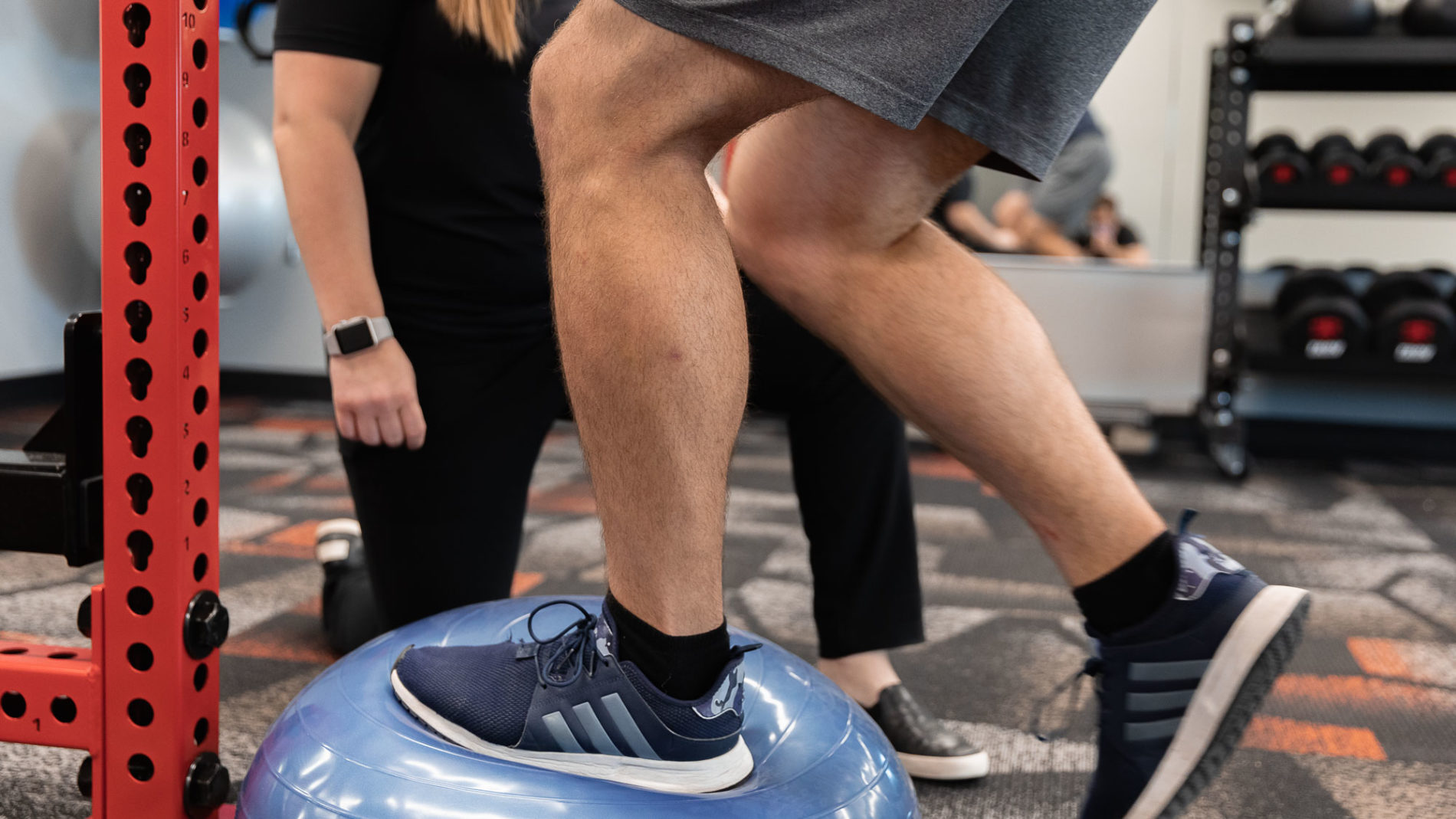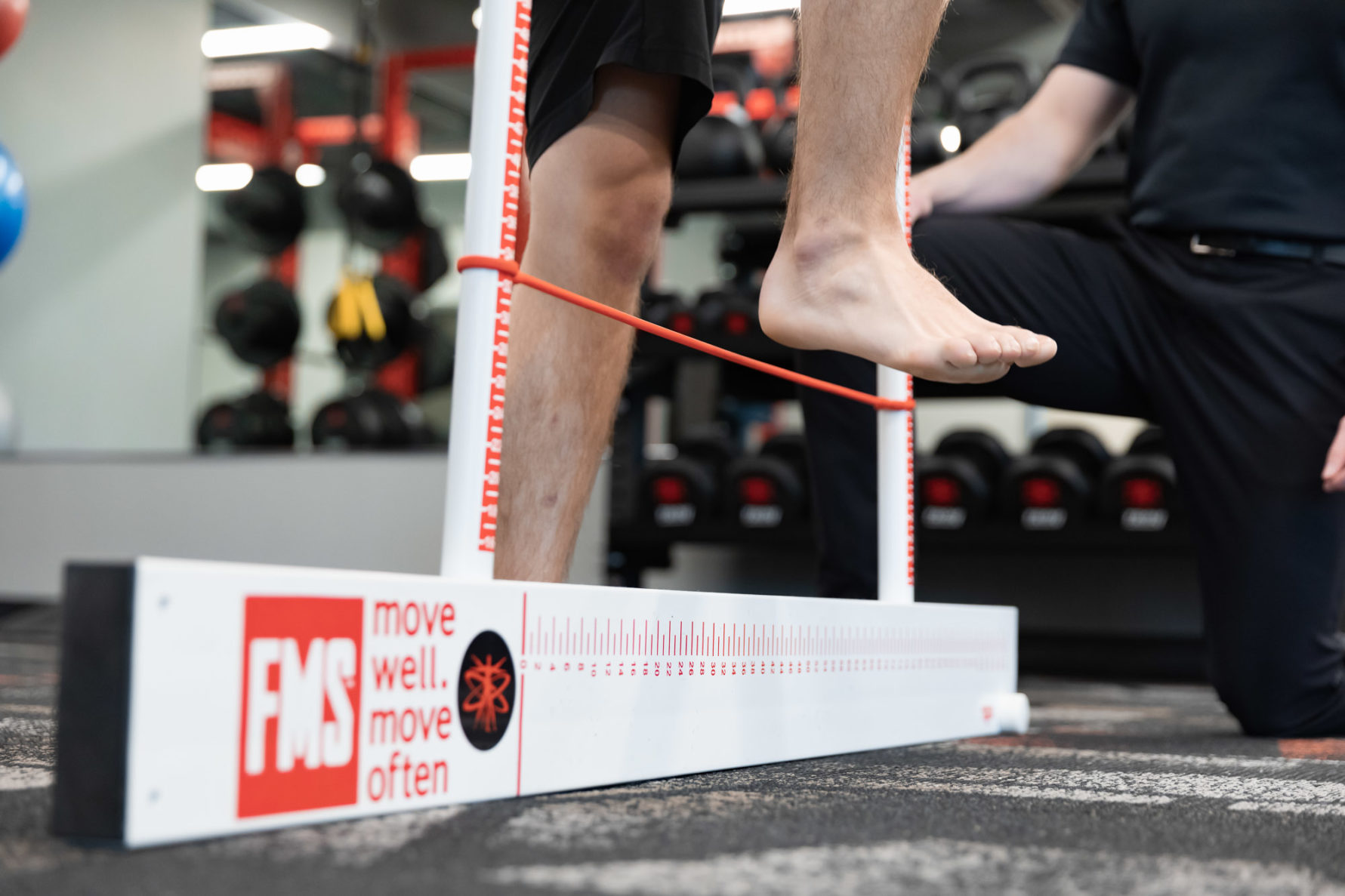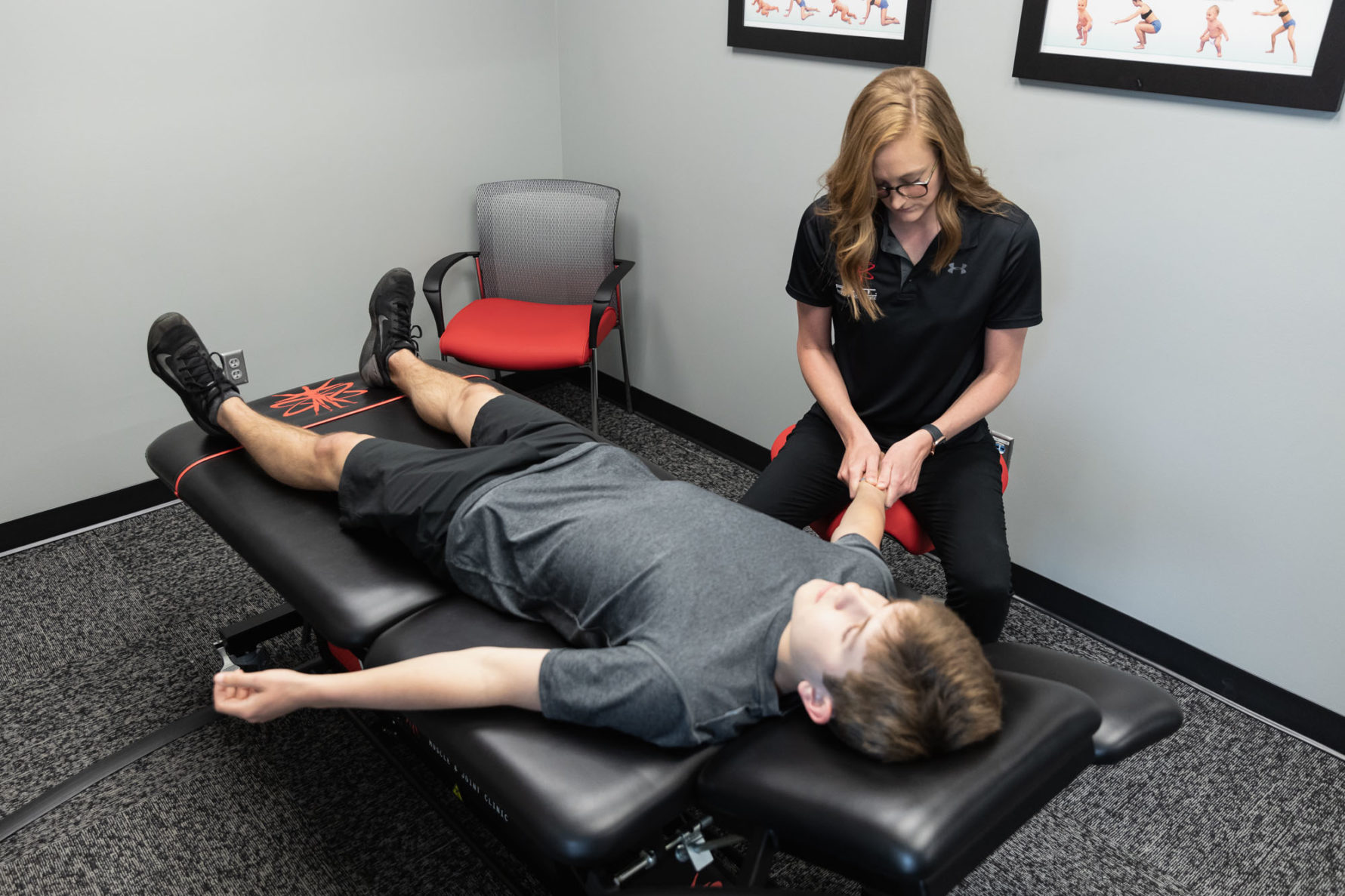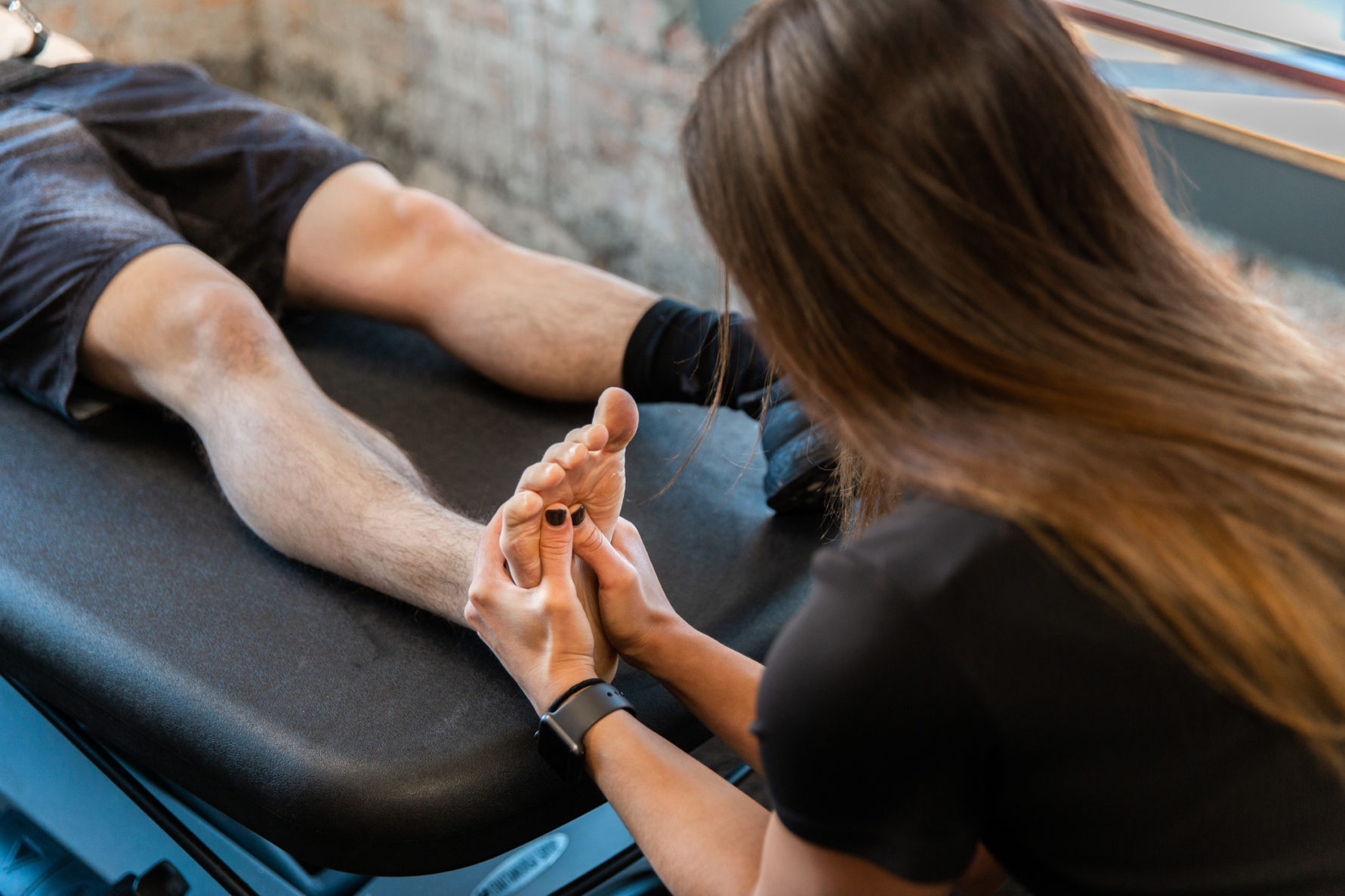
What is plantar fasciitis? In Kansas City, F.I.T. Muscle & Joint Clinic sees dozens of patients at each of our clinics every day. In our experience, foot pain caused by plantar fasciitis, can greatly benefit from physical treatment.
Read on to learn more about this condition and how we work with patients to treat not only the pain, but the cause.
What is plantar fasciitis in Kansas City?
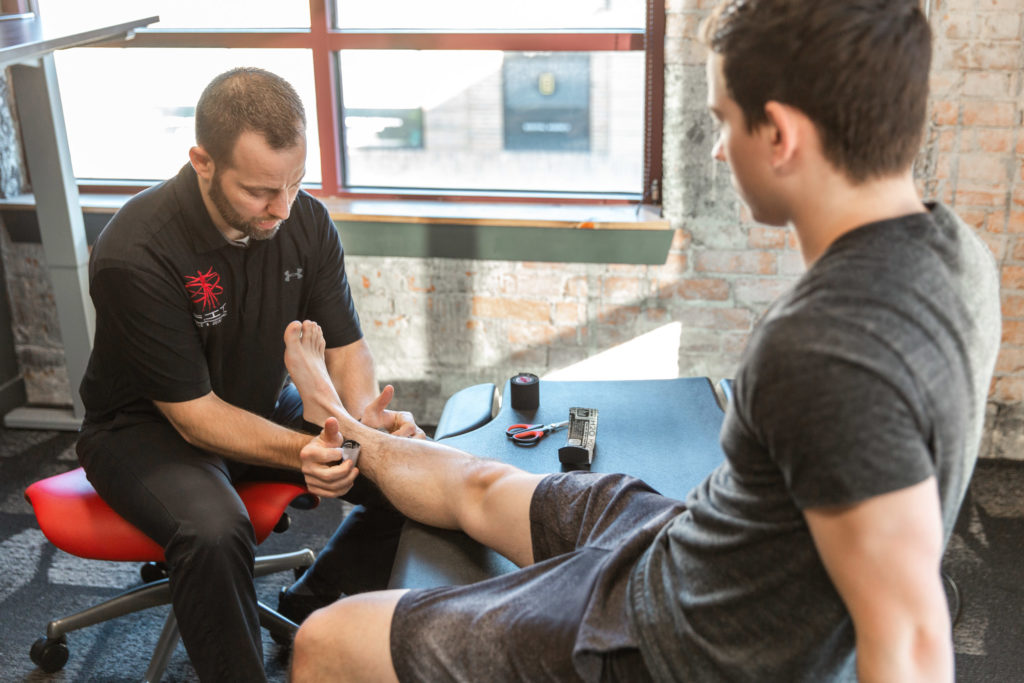
Plantar fasciitis is the most common cause of foot pain, typically experienced in the heel, arch of the foot, or base of the toes. Specifically, plantar fasciitis is an inflammatory condition that evolves into degeneration of the tissues over time.
One hallmark symptom of plantar fasciitis is immediate pain underneath the foot or heel when taking the first few steps in the morning. Most of our physical therapy patients also experience plantar fasciitis pain when walking after prolonged periods of sitting, but this pain often alleviates with continuous walking.
Muscles affected with plantar fasciitis
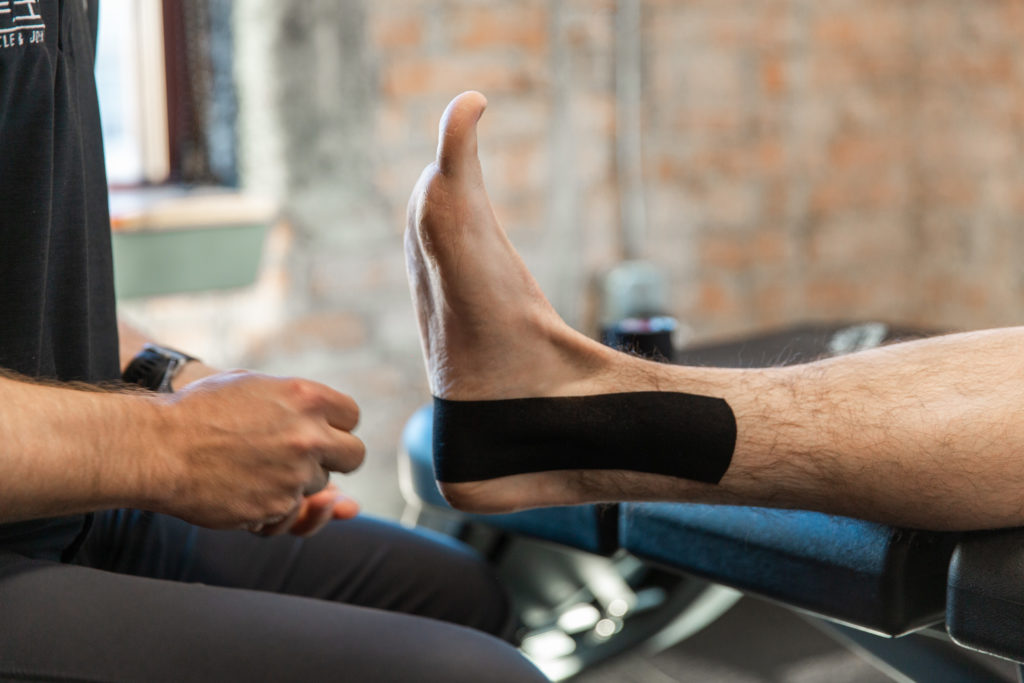
Common muscles involved with plantar fasciitis are the quadratus plantae and flexor digitorum brevis, as well as the plantar aponeurosis. The plantar fascia, along with the plantar aponeurosis, form the most superficial layer of the sole of the foot.
The quadratus plantae muscle lies deep in between the plantar aponeurosis and plantar fascia. When this muscle is weak or inhibited, toes will curl inward, which can be seen while standing barefoot. This quadratus plantae joins the flexor digitorum longus tendon to collectively flex or curl the toes and support the arches of the feet.
The flexor digitorum brevis lies deep to the plantar aponeurosis, and its main function is stability control of the arches of the feet.
Collectively, when inflamed, the plantar aponeurosis & plantar fascia are grouped together and diagnosed as plantar fasciitis.
Tightness of these muscles and/or the plantar aponeurosis can limit motion and circulation, resulting in foot pain. If plantar fasciitis occurs long enough, it can create a heel spur, which often requires surgery for complete resolution of symptoms.
Current research indicates this bone spur is actually a calcification of the flexor digitorum brevis muscle—not the plantar fascia. Having a qualified musculoskeletal specialist from F.I.T. Muscle & Joint Clinic diagnose which muscle or muscles are causing your symptoms is important for the proper treatment and the fastest recovery from plantar fasciitis in Kansas City.
Read all about the benefits of physical therapy in Kansas City here →
Evaluation of plantar fasciitis in Kansas City
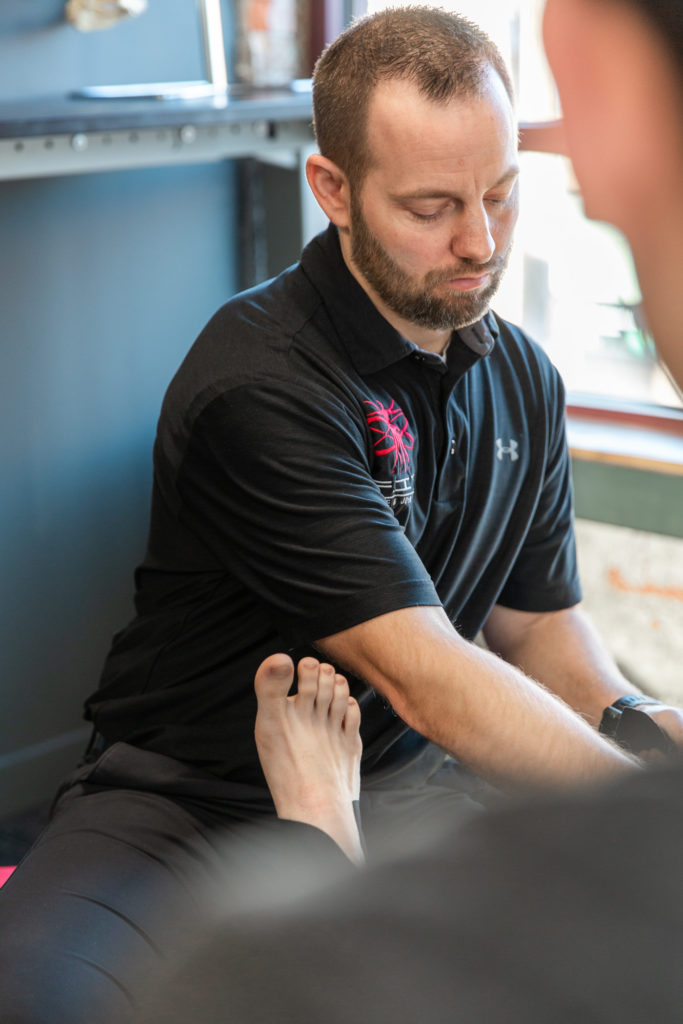
Gait analysis, an evaluation of the biomechanics during walking and running, is an important component when dealing with plantar fasciitis.
Biomechanical deficiencies or compensation mechanisms during movement can cause pain and overuse injuries in certain muscles, fascia, tendons, and/or ligaments.
Factors that contribute to plantar fasciitis include muscle imbalances of the lower extremity, variations in the structure of the foot and lower extremity, and improper footwear based on specific foot structure.
When someone experiences plantar fasciitis, often other complicating factors contribute to their pain and dysfunction. And plantar fasciitis is a chronic condition that can be very debilitating if left untreated.
Learn more about what plantar fasciitis is and how to treat it in Kansas City
At F.I.T. Muscle & Joint Clinic, our focus is not only to alleviate the pain associated with plantar fasciitis, but also to correct the cause. If plantar fasciitis is something you or someone you know is having difficulty with and would like to know more about the services provided at F.I.T. Muscle & Joint Clinic, call to talk to one of the doctors today.
References
- Abreu, M., Chung, C., Endes, L., et. al. (2003). Plantar calcaneal enthesphytes: new observations regarding sites of origin based on radiographic, MR imaging, antmic, and paleopathalogic analysis. Skeletal Radiology;32:13-21
- Cotchett, M.P., Munteanu S.E., Landor, K.B. (2014). Effectiveness of trigger point dry needling for plantar heel pain: a randomized controlled trial. Journal of the American Physical Therapy Association;94(8):1083-94.

